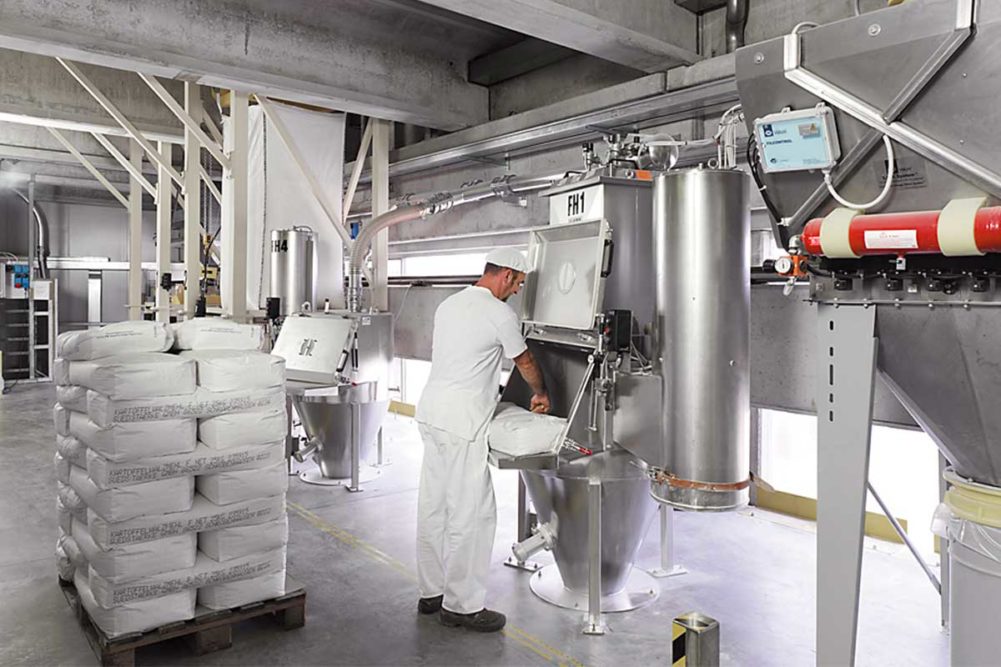At ingredient handling and mixing, operators working in these departments were expected to know how to formulate and troubleshoot a dough as it comes together. With ingredient handling systems managing the bulk of that work, operators’ responsibilities transform into monitoring and troubleshooting a system. In a labor environment with high turnover, Mike Miller, director of sales, food, AZO Inc., argued that elevating employees’ skills can result in a more satisfied, reliable workforce.
“Generally, the higher level of skill, the more reliable that workforce is,” he said. “You end up with less turnover and also you can do more production with fewer people.”
Moving from a completely manual operation to the first steps of automation — typically a bulk system — can include a major culture change.
“Often the operators feel the need to tell the system what to do instead of letting the automation do its job,” said Jason Stricker, vice president of sales and marketing, Shick Esteve. “When there’s a human interaction step, we prompt them what to do and ask them to acknowledge they’ve completed the step. We make it very intuitive, but it can be problematic if they’re not trained.”
For those operators working with automated ingredient handling systems for the first time, it’s not just understanding that automation doesn’t need them to direct it. They need to understand how to care for the new components and how to share space with the system in order to preserve the life of the equipment.
“Operators stacking bags, tools or even stepping over weighing equipment are some of the challenges faced when a new system for minors and micros is in place,” said David Rodrigues, sales engineer for USA West Coast and Latin America, Zeppelin Systems USA. “Inappropriate maintenance and bad cleaning procedures can also be a threat to the system lifetime and overall efficiency. A saturated filter or a hardened flexible connection due to a non-recommended wash, for example, can directly affect the precision and efficiency of minor and micro scaling.”
Maintenance on automated systems is another cultural shift baking companies must make, one that requires more training. Mr. Murphy explained that preventative maintenance must be done on a set schedule, rather than simply fixing equipment once it’s already gone down. Operators must be trained on this schedule as well as troubleshooting when it comes to equipment failure.
“When you introduce automation, customers need to be made aware that regular preventative maintenance is important to maintain the system efficiency,” he said. “If not done properly they will lead to breakdowns and damage of parts. Nothing is worse than having automated equipment not running with your production down.”
Incorporating automation for the first time will require robust training. And even with higher skilled positions that automation requires, companies are still seeing record turnover, which leads to bakeries having to train workers more often. The frequency of training combined with innovations that came out of the pandemic have equipment suppliers integrating new methods of support.
“How we approach training in the future is a big focus at Shick Esteve, including remote support and providing a visual element for maintenance and operational training,” Mr. Stricker said. “We’re producing so much more video and training materials than previously. We’re even using wearable technology to provide a closer look at the equipment and procedures in our video materials. With our customers facing frequent retraining, we’re recording our training sessions onsite so they can be more self-reliant when training new staff.”
Darren Adams, vice president, engineering, The Fred D. Pfening Co. suggested that in-person training is preferable, which takes about 4 to 6 hours per employee. Pfening also finds itself creating more video training materials, which are helpful when working with international customers.
“We have some international customers, which can be difficult to get to in a timely manner,” he said.
Pfening also designs its control systems and interfaces to mimic the look of other touchscreens people interact with in their daily lives to shorten the learning curve. The company does the same with the equipment operation, too.
“We try to make our systems look the same from plant to plant within a company,” Mr. Adams said. “That can help if people are jumping from facility to facility or even company to company. If they’re working with Pfening equipment, the learning curve is reasonable.”
Lack of experienced or even reliable labor is a persistent challenge the baking industry faces. It was a challenge before the pandemic changed the way today’s workforce views labor, and it hasn’t gotten easier. By investing in automation and training, baking companies can successfully improve production efficiencies and accuracy in their ingredient handling all while greatly reducing their reliance on — and therefore risks of — labor.
This article is an excerpt from the April 2023 issue of Baking & Snack. To read the entire feature on Ingredient Handling, click here.






